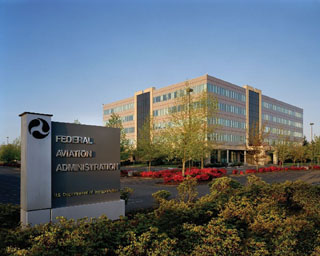|
Subscribe / Renew |
|
|
Contact Us |
|
| ► Subscribe to our Free Weekly Newsletter | |
| home | Welcome, sign in or click here to subscribe. | login |
Real Estate
| |
 |
December 2, 2011
Brokers catch on to the green movement
Special to the Journal

Travers
|
Given the national global economic chaos we’re spinning in, it’s not surprising that the only “green” real estate brokers want to talk about is legal tender. Understandable. But with calmer heads prevailing, there’s no better time to gear up for the future than now.
Most commercial brokers are out pounding the pavement, digging for deals, polishing their golf game and unearthing any tenant or buyer with a pulse. Many are also refreshing their resumes and ramping up their sustainability intelligence.
While some real estate brokerages offer internal courses on sustainability and green issues, the U.S. Green Building Council and its LEED program has proven, even to early naysayers, to be the command center for energy and environmental leadership. Beyond evaluating and certifying green buildings, LEED has grown into a powerhouse reservoir of green education.
The council’s Green Building Certification Institute provides third-party project certification and professional credentials recognizing excellence in green building performance and practice. Real estate brokers who have earned LEED professional credentials, which include the LEED Green Associate and LEED AP, are now required to maintain those credentials in the Credential Maintenance Program.
Certified Green Broker
The Commercial Brokers Association is a U.S. Green Building Council education provider, offering its Certified Green Broker course for ongoing professional development of commercial real estate brokers. The program enables agents and brokers to identify essential issues related to green features of projects and provide accurate advice and counsel on the benefits of buying, building, leasing and managing.
Certified Green Brokers earn 30 Green Building Certification Institute CE hours toward the LEED Credential Maintenance Program.
Architects, developers, contractors — even lenders and appraisers and insurers — have been navigating the benefits of property sustainability for years. As frontline practitioners, commercial real estate brokers must catch up with relevant sustainability knowledge for buyers, sellers, landlords and tenants. How can you relay to an acquisition analyst the cost benefits of a mechanical retrofit or explain the energy savings of daylight cleaning to a tenant if you aren’t even equipped with the baseline terminology?
Building the case for green practices can be complicated. Brokers need to be well versed in green vernacular, regulations, certifications and compliance systems.
Constance Wilde, vice president at CB Richard Ellis in Seattle, recently completed the Certified Green Broker course.
“The education completely transformed the way I look at my business,” said Wilde. “We, as brokers and agents of change, are the logical navigators of the myriad of sustainability choices for property buyers, sellers and tenants. This is one instance where what you don’t know will surely hurt you. If not now, later.”
With or without LEED credentials, becoming a Certified Green Broker sets today’s broker far apart from the conventional pack.
Think nobody cares?
According to Brenna Walraven, former chair of BOMA International, “The number of tenants, cities and states choosing green is growing rapidly. In no more than five years — and maybe in as little as 24 to 36 months — you will face a competitive disadvantage if your building is not green and operating efficiently.”
The veer towards sustainable real estate is not a small one. Companies such as Walmart, McDonald’s, Kohl’s, Best Buy and Subway have either opened or are constructing green stores and branches. Along with cost savings, retail outlets (often the first to recognize economic and social change) have found that store design, lighting and “green” materials have resonated positively with customers.
The result? More time spent in stores, thus more spending. Walmart has reported higher sales in stores with natural light, accomplished simply with bigger windows, skylights and solar tubes. Patagonia and REI have both opened green distribution centers.
| Certified Green Broker |
|
Certified Green Brokers earn 30 hours of real estate continuing education credit in select states, have access to CBA’s Green Lease, and earn 30 GBCI CE hours toward the LEED Credential Maintenance Program. For more information, visit www.greenbrokereducation.com or call (800) 275-2522. |
Sustainability is not just about the building, but the practices inside. Target recycles a billion pounds of cardboard a year and has switched to energy-efficient lighting. REI’s 525,000-square-foot Bedford, Pa., facility features a high-performance envelope and lighting system with daylight and occupancy sensors, and is designed to reduce energy costs by 25 percent versus a typical distribution center.
Tenants, large and small, are demanding green spaces for a number of reasons, not just for the marketing angle. Studies have shown that green buildings can significantly lower operational costs and improve indoor environmental health quality (better air + light = employee productivity, less turnover).
Green directives are often included in company mission statements in an effort to achieve corporate social responsibility. And then there are government mandates. Federal and state mandates requiring green operating practices are fast becoming the norm. Incentives for applying green measures range from tax credits, rebates and grants to speedy permitting processes.
An educated broker means an educated client. Certified Green Brokers come armed with green knowledge. Recommending green strategies to clients and staying current with the national and global green real estate market will prepare today’s broker for what is undeniably becoming mainstream.
Green Brokers can identify future trends simply by paying attention to new initiatives, programs, technologies and regulations. Brokers interested in keeping up with future trends would be wise to keep their eyes open to current trends — especially abroad, where this reality is compelling.
Barbara Travers, owner of BT Marketing, writes for and about the commercial real estate industry.
This article was reprinted with permission of the Crest Publications Group
Other Stories:
- Insights breakfast is all about fundamentals
- Tourism, conventions, real estate — a valuable connection
- CBA Roundtable
- Strong vital signs for health-care real estate
- Investors turn aggressive on industrial properties
- For offices, it feels like 2007 all over again
- Owners, here’s how to hire the right project team
- Blake Eagle
- Rob McKenna
- Banks find a comfort level for lending
- Jerry Yudelson
- Is multifamily’s future in ‘transit communities’?
- Retail begins to reset, refill



